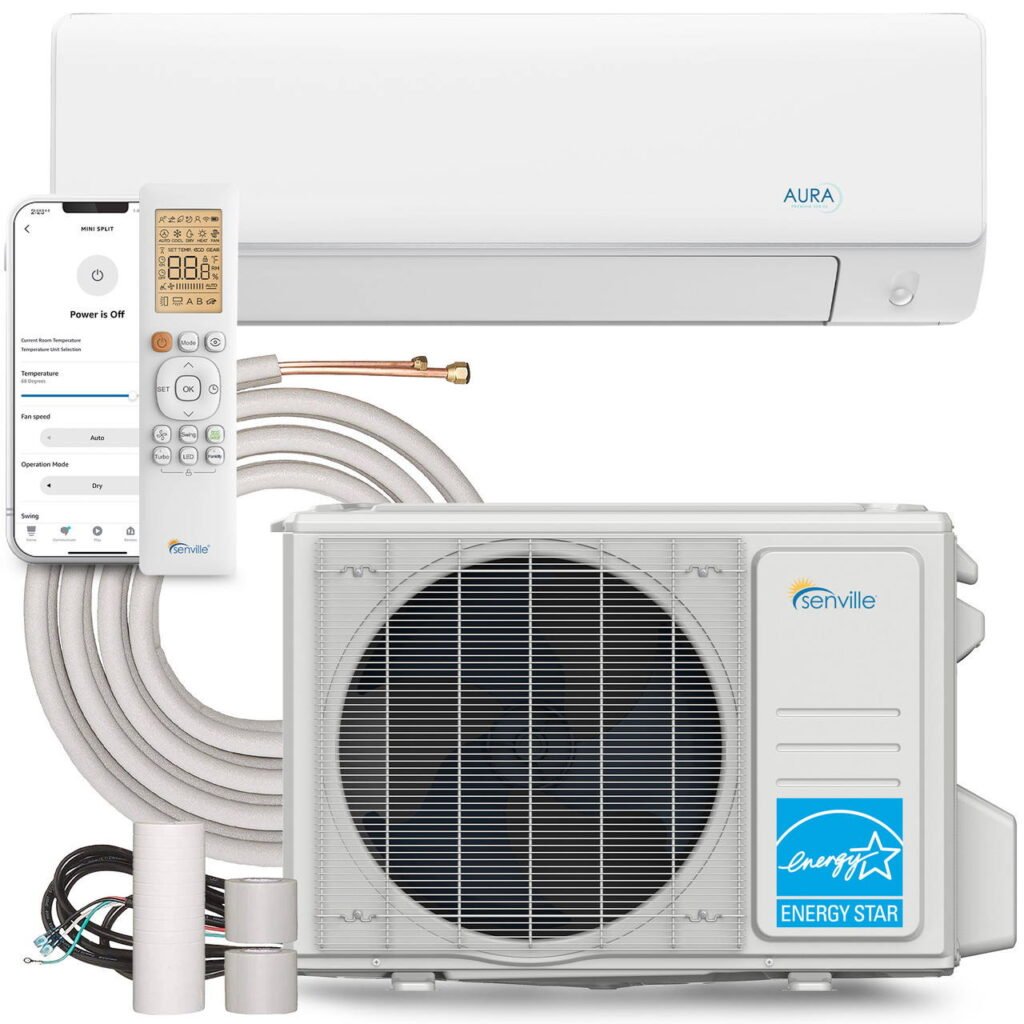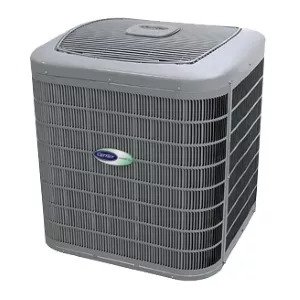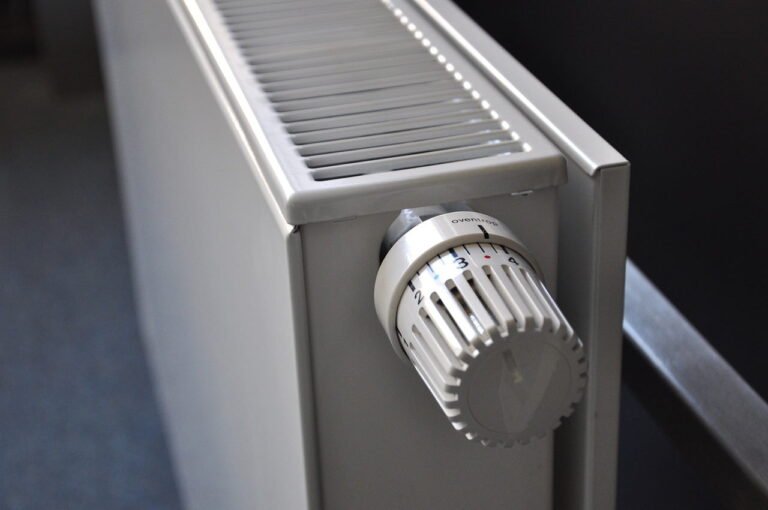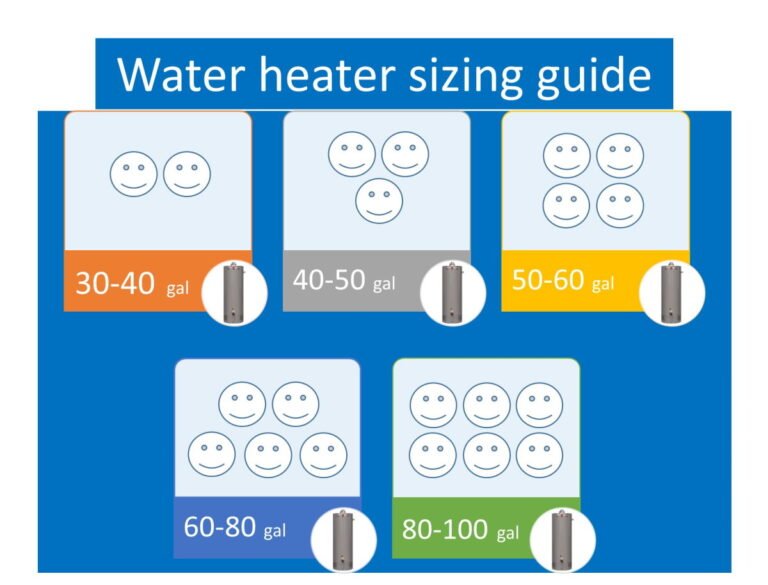Ultimate Guide to Benefits of Ductless Mini Split Heat Pumps
Thinking about the best way to heat and cool your space?
If you’re leaning towards a solution that’s both efficient and flexible, ductless mini split heat pumps could be just what you need.
These systems have become a popular choice for good reason. Whether you’re outfitting a new home, upgrading an old one, or just adding a bit more comfort to certain rooms, going ductless offers a large number of benefits.

With a long history of reliability and flexibility, ductless heat pumps are well-established in the market. They’re celebrated for their ability to save energy and money—two things we all love to hear.
Beyond the cost savings, their easy and flexible installation makes them perfect for local climate control.
Whether you’re supplementing an existing central HVAC system or setting up something entirely new, mini splits adapt effortlessly to both new constructions and historical homes alike.
Let’s explore the top features, advantages, and benefits of these systems, and what makes ductless mini split heat pumps a smart choice for today’s homeowners
Buying a Ductless Mini Split Heat Pump: Advantages and Benefits
Energy Efficiency
Ductless mini split heat pumps are a smart choice for both older homes and modern spaces, largely because they bypass the need for extensive ductwork, as found in air-to-air heat pumps. This not only cuts installation chaos but also enhances energy efficiency dramatically. By controlling the climate zone-by-zone, you minimize waste and maximize comfort—only heat or cool the rooms you’re using.
Targeted Temperature Control
With zonal heating and cooling, ductless mini splits allow you to manage the temperature in individual rooms. This isn’t just about comfort, it is about efficiency. Reducing energy consumption by not indiscriminately heating or cooling unused spaces leads to noticeable savings on utility bills. Plus, each zone can be tailored to the specific needs of its occupants, ensuring everyone is comfortable.
Versatile Installation
The installation is far less invasive than traditional HVAC systems, and especially so compared to geothermal systems. Since there’s no need to install a network of ducts, the process is quicker, less disruptive, and often cheaper. This means less labor, less material used, and significantly less time before you can enjoy your new system.
Advanced Technology
Utilizing inverter technology, ductless units can efficiently provide both heating and cooling. This technology adjusts the power used to suit the exact air conditioning needs at any given moment, which reduces energy spikes and helps maintain a consistent temperature.
High SEER (Seasonal Energy Efficiency Ratio) and HSPF (Heating Seasonal Performance Factor) ratings further attest to their efficient operation, promising lower operating costs.
Wide Selection
There’s a wide array of manufacturers and models to choose from, meaning you can find the perfect mini split to match your specific needs, aesthetic preferences, and budget. Whether you’re looking for a unit that emphasizes ultra-quiet operation or one that blends seamlessly into your decor, there’s an option out there for you.
Quiet Operation
Thanks to high-quality components and advanced operational technologies, ductless mini splits run quietly. This makes them ideal for environments where noise is a concern, such as bedrooms, home offices, and libraries.
Long-Term Investment
With proper maintenance, a ductless mini split heat pump can last over 20 years. Considering their efficiency, ease of use, and the reduced installation costs, they represent a sound investment that pays dividends in comfort, savings, and reliability over the long term.
Things To Consider Before Buying a Mini Split Heat Pump
Configuration
First, ensure you understand what’s included in the box. A ductless heat pump, or mini split system, consists of an outdoor unit, an indoor unit, and a conduit that connects the two through an opening in the wall. The outdoor unit houses the compressor and condenser. The configuration and type of the indoor unit will depend on your specific needs.
You can opt for one or several air-handling units, each with its own thermostat and remote control. Indoor units are typically wall-mounted but can also be installed as ceiling cassettes. Outdoor units are either mounted on the building’s exterior wall or placed on the ground for larger, heavier units.
Zoning
Consider how many rooms or zones you need to heat or cool.
What type of installation is most convenient for your home?
Are you planning to use this system as an additional or the primary source of heating/cooling?
Having more than one independent indoor blower allows for different temperatures in each zone, enabling customized energy consumption. However, the initial investment for a multi-unit system is higher.
Efficiency and Power
Mini split HVAC systems are extremely efficient for heating well-insulated spaces. If your home is less insulated, detailed calculations are necessary.
A critical feature to consider is the power of the mini split, expressed in BTUs. Note that the numbers vary slightly between cooling and heating modes.
Generally, a 6000 BTU/h mini split unit is sufficient for a room size of 150-250 square feet. However, these calculations are not straightforward. If ceilings are higher than 8 feet, or if areas are poorly insulated, increase the required BTUs by 20%. For climates with temperature extremes, add 30% to the BTU calculation. Remember that each indoor unit in a multi-split system has its own BTU/h capacity, but the effectiveness decreases if all units are used simultaneously.
Look for efficiency metrics such as HSPF (Heating Seasonal Performance Factor), SEER (Seasonal Energy Efficiency Ratio), EER (Energy Efficiency Ratio), and the Energy Star rating. These numbers and labels inform customers about the system’s measured efficiency. When comparing two models, review all these parameters, sometimes including a prediction of the yearly operating cost.
Other Features to Consider
Full Specifications
Carefully review the full specifications of the system, including the noise level, operating temperature, and airflow for each fan speed. It’s also essential to check the types and lengths of warranties offered. Opt for a unit that uses R-410A refrigerant, which is environmentally friendlier than the older R-22 refrigerant currently being phased out.
Electrical Requirements
If you’re considering a larger unit, check the voltage compatibility of your home wiring. Larger units typically require a 220-240-volt outlet.
Financial Incentives
Investigate whether financial incentives or rebates are available. Ductless heat pump systems are often eligible for these benefits due to their energy efficiency and environmentally friendly attributes.
Additional Features
Ductless mini split heat pump systems come equipped with several beneficial features. Look for systems with a programmable timer, adjustable airflow, washable air filters, and automatic restart.
Also, consider if the system offers frost control and additional operational modes like fan-only, automatic, dehumidify, and sleep. Reviewing all available features will help you select the best system for your needs.
Are Ductless Mini Split Heat Pumps Worth It?
Ductless mini split heat pumps are an excellent choice for spaces where traditional central HVAC systems might not be feasible. Offering a flexible solution, these systems are perfect for targeting specific rooms that require heating or cooling.
Whether used as a supplemental system in colder regions or as the primary source of comfort in warmer or mild climates, ductless heat pumps adapt seamlessly to your needs. They can effectively manage the climate of a single room or be combined with multiple indoor units to achieve zoned climate control across various rooms.
Not only are ductless heat pumps more affordable, but they are also straightforward to install. Their quiet operation and cost-effectiveness make them a smart, economical choice for anyone looking to enhance their home’s heating and cooling efficiency without the extensive disruption and expense associated with traditional HVAC installations.
More About Heat Pumps

Heat Pump Not Cooling? Here’s What You Need to Know
Heat pumps are essential not only in the winter for heating our homes but also in the summer to cool…

Compare Ductless Mini-Split Heat Pumps vs. Window Heat Pumps: Which Is Right for You?
In this article, we are going to look at ductless mini-split heat pumps vs. window heat pumps, examine how each…

Explore the Differences: How Ductless vs. Ducted Heat Pumps Compare
Deciding between ductless vs. ducted heat pumps is as easy as planning a holiday. You know it’s going to cost…




